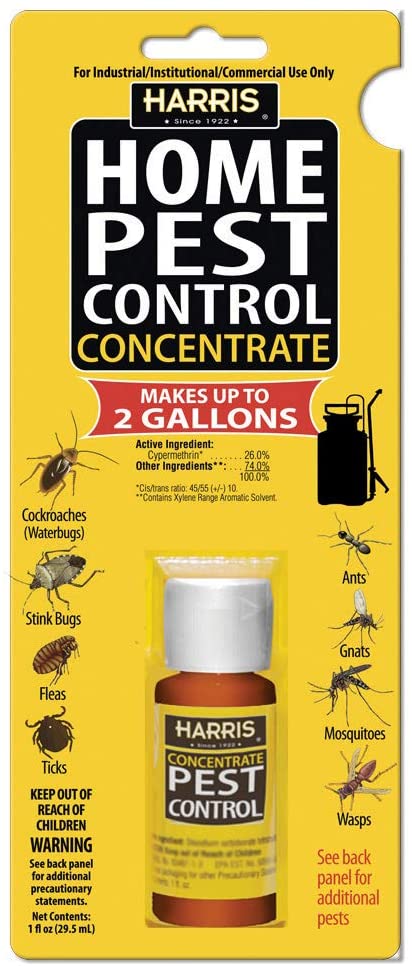Bed Bug Therapy Failure: Contrasting Chemical Vs. Non-Chemical Solutions
In the realm of insect control, particularly when taking care of the persistent concern of bed bugs, the selection between chemical and non-chemical therapy remedies can be an essential one. Both methods supply distinct benefits and disadvantages, affecting elements such as performance, safety factors to consider, and total cost. By checking out the nuanced information of each approach, a more clear understanding of which course to pursue in attending to a bed pest problem can be attained.
Effectiveness of Chemical Treatments
Chemical treatments for bed insect invasions have been widely recognized for their fast and powerful efficacy in getting rid of these parasites. When taking into consideration the efficiency of chemical treatments, it is essential to understand that they can provide a detailed and quick solution to a bed pest issue.
Furthermore, chemical therapies have the advantage of supplying residual effects, meaning that they can remain to get rid of bed bugs also after the preliminary application. This residual action is especially valuable in combating any prospective re-infestations. In addition, the fast activity of chemical treatments can bring alleviation to people dealing with extreme bed insect problems, permitting them to restore control of their living areas quickly.
Safety And Security Issues With Chemical Solutions
One essential facet that calls for mindful consideration when making use of chemical services for bed bug treatment is ensuring the security of owners and the environment. While chemical treatments can be effective in removing bed pests, they might present dangers otherwise taken care of correctly. Among the primary safety worry about chemical solutions is the potential injury they can create to human wellness. Direct exposure to particular chemicals used in bed insect therapies can result in breathing problems, skin irritation, or other damaging responses, particularly in individuals with pre-existing conditions or level of sensitivities. In addition, inappropriate application or dosage of chemical pesticides can lead to toxic deposits remaining in the treated location, posing lasting health and wellness risks to occupants.
Moreover, the ecological influence of chemical services is an additional significant consideration. Some pesticides used in bed insect treatments might be dangerous to advantageous bugs, wild animals, and ecological communities if they seep into the dirt or water systems. It is vital to utilize chemical treatments judiciously, following security standards, and considering less poisonous alternatives to alleviate these threats and guarantee the secure and effective administration of bed pest invasions.
Benefits of Non-Chemical Approaches
Taking into consideration the possible safety and security worries and ecological influence connected with chemical solutions for bed pest treatment, checking out non-chemical approaches offers an encouraging option with a number of distinctive benefits. Non-chemical treatments are ecologically friendly, More hints as they do not contribute to air or water contamination, making them a lasting choice for bug control.
Furthermore, non-chemical options can be efficient in targeting bed insects, consisting of hard-to-reach areas where chemical treatments might not pass through. Techniques such as heat treatment, vacuuming, vapor cleansing, and mattress encasements give comprehensive eradication without the use of damaging chemicals. Moreover, non-chemical techniques can be much less turbulent, calling for very little prep work and permitting quicker reentry right into dealt with areas. In general, choosing non-chemical bed bug treatment techniques not only prioritizes safety and environmental management but likewise ensures extensive and effective insect control.
Limitations of Non-Chemical Treatments

Furthermore, non-chemical therapies usually call for several applications to accomplish successful elimination. This can be lengthy and might not constantly assure total elimination of all bed insects and their eggs, especially in hard-to-reach or surprise areas.
Additionally, the success of non-chemical treatments greatly relies upon appropriate application and thoroughness, which can be challenging for individuals without expert knowledge. Poor application of non-chemical methods may cause incomplete eradication, resulting in persistent invasions and the demand for extra treatments.
Consequently, while non-chemical therapies have their advantages, it is necessary to acknowledge these limitations and consider them when figuring out the most effective method for managing bed insect infestations.
Expense Comparison: Chemical Vs. Non-Chemical Options
Given the restrictions linked with non-chemical therapies, a crucial element to examine in the context of bed insect administration is the price contrast in between chemical and non-chemical options. In contrast, non-chemical therapies like warm treatment or steam can be much more costly, with costs ranging from $1,000 to $6,000 for a whole home. website link While the first cost of chemical treatments might seem lower, several treatments might be required to completely eradicate the invasion, possibly house and pest inspection increasing the general cost.
Conclusion

Taking into consideration the prospective safety and security concerns and ecological influence connected with chemical remedies for bed pest therapy, exploring non-chemical methods presents a promising alternative with numerous distinct advantages.Given the constraints linked with non-chemical treatments, a vital facet to assess in the context of bed pest management is the expense comparison between chemical and non-chemical choices. In comparison, non-chemical therapies like heat treatment or vapor can be extra pricey, with costs ranging from $1,000 to $6,000 for a whole home. While the first expense of chemical therapies might seem lower, multiple treatments may be required to fully get rid of the problem, possibly increasing the overall expense.In verdict, when contrasting chemical and non-chemical bed pest therapy alternatives, it is crucial to think about efficiency, security, advantages, limitations, and cost.